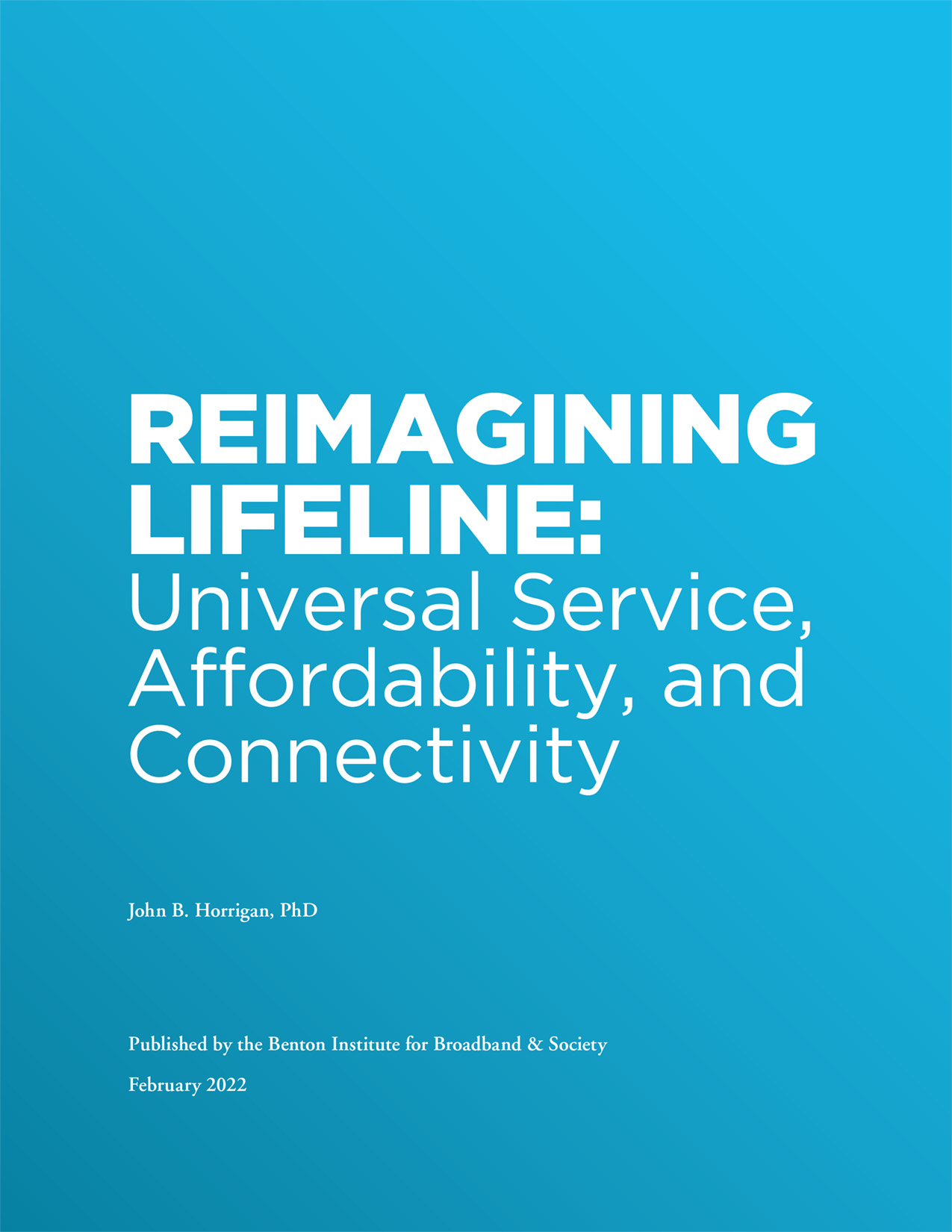John Horrigan
Three Data Points to Help Plan for Infrastructure Investment and Jobs Act Broadband Funding
As policymakers begin to plan how to use Infrastructure Investment and Jobs Act (IIJA) funds to increase broadband connectivity, there are three important data points from two recent surveys to keep in mind:
- Some 32% of households are subscription vulnerable, that is, they struggle to maintain service and have a very difficult time affording service.
-
Only 18% of cellphone-only respondents were “very satisfied” with their online access for activities such as school or work, activities that moved online during the COVID-19 pandemic.
What Policymakers Should Know About Lifeline Participants
In July 2021, the Federal Communications Commission's Wireline Competition Bureau released its report on the state of the Lifeline marketplace. The aim of the report was to identify areas for FCC consideration regarding the continued transition of Lifeline from a program that primarily supports voice services to one with a greater focus on supporting broadband Internet access service. Unfortunately, there are three critical questions I noticed the FCC’s Lifeline report did not address:
The Lifeline Market
The goal of universal service is to ensure that essential communications services are available and affordable for all. Equity remains a bedrock principle: the notion that society should take steps to ensure that all (or nearly all) citizens can use communications networks. However, whereas it was once fairly easy to identify the goal—widespread adoption of telephone service—today the situation is not as clear. Should, for instance, “universal service” include internet access? If so, at what level of service?
The Affordable Connectivity Program represents an inflection point for Lifeline and universal service.

It is Time to Reimagine Lifeline
Low-income households are spending too much on connectivity. Prior to the pandemic, the Federal Communications Commission’s Lifeline program supported mainly wireless communication services for low-income households; its $9.25/month subsidy resulting in service plans that restricted voice and data usage. To address Americans’ online connectivity needs during the pandemic, Congress directed the FCC to launch the Emergency Broadband Benefit (EBB) program—a historic expansion of financial support for universal service.
Digital Skills and Trust
A deep dive into the role digital skills play in people’s interest in and ability to adopt and engage with the internet. This report reveals how much trust people place in public and private institutions such as schools and community-based nonprofits when it comes to learning about discounted and subsidized internet services. The survey findings, focused on income-insecure households (those making $50,000 or less annually), highlight the importance of digital skills training programs and trusted outreach partners as critical components to effective digital inclusion initiatives.
Affordability and the Digital Divide
Understanding affordability of internet service and its role in adoption are crucial for developing solutions to close the digital divide.The goals of this study were first to understand the barriers to connectivity and efficacy of low-cost internet service options; and second, to use the findings to inform digital inclusion policies, advocacy efforts, and other initiatives that aim to drive digital equity. The findings were informed by a national survey on broadband adoption among low- and lower-middle income households.
An Evolving Level of Service
How will the Infrastructure Investment and Jobs Act impact universal service policy and, specifically, the Lifeline program? The new law sets up a transition from the Emergency Broadband Benefit, a program that is only six months old, to the new, more permanent Affordable Connectivity Program.
Growth in EBB Enrollment since June has been in Large Cities and Places with Low Broadband Adoption
Since the Emergency Broadband Benefit launched in May 2021, enrollment has grown steadily. By the end of June, 3.1 million households had enrolled, a figure that rose to 7.4 million by the beginning of November. Analysis of the geography of this growth shows that it was not evenly distributed. South Florida, Detroit, Chicago, and New York City have all seen very strong growth in enrollment since June. In the Los Angeles area, more than 100,000 additional households have signed up since then.
Action Needed Now to Preserve an Essential Lifeline During the Pandemic
Universal service is the principle that all Americans should have access to essential communications services, like phones and broadband. You may not have heard much about it, but a universal service crisis is right around the corner. Due to Federal Communications Commission inaction, nearly 800,000 people could lose phone service on December 1. On that day, changes in the FCC’s Lifeline program, which provides a modest monthly discount for communications services, mean that voice-only services like a home landline telephone and/or a cellphone will no longer be eligible for the discount.

